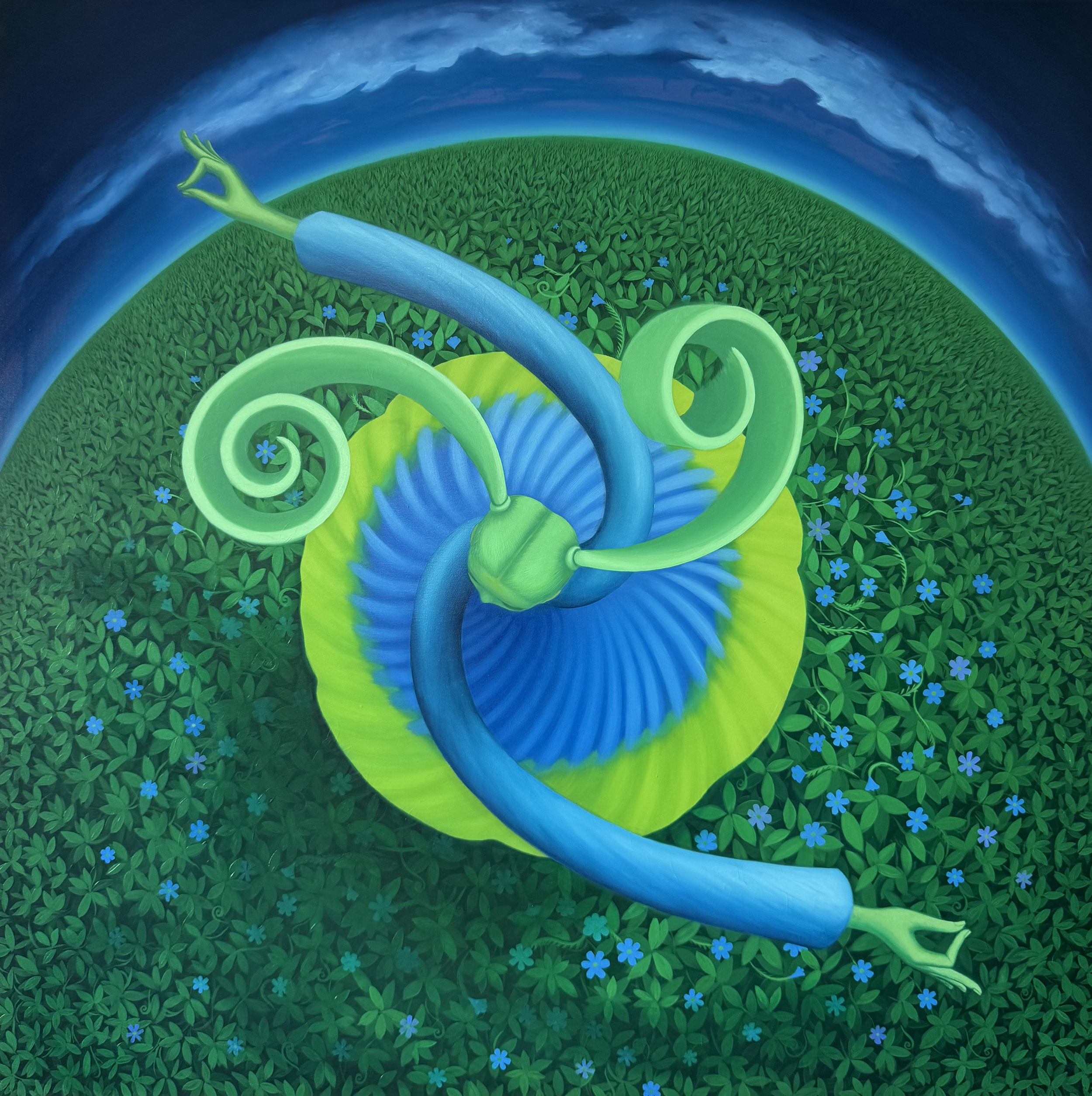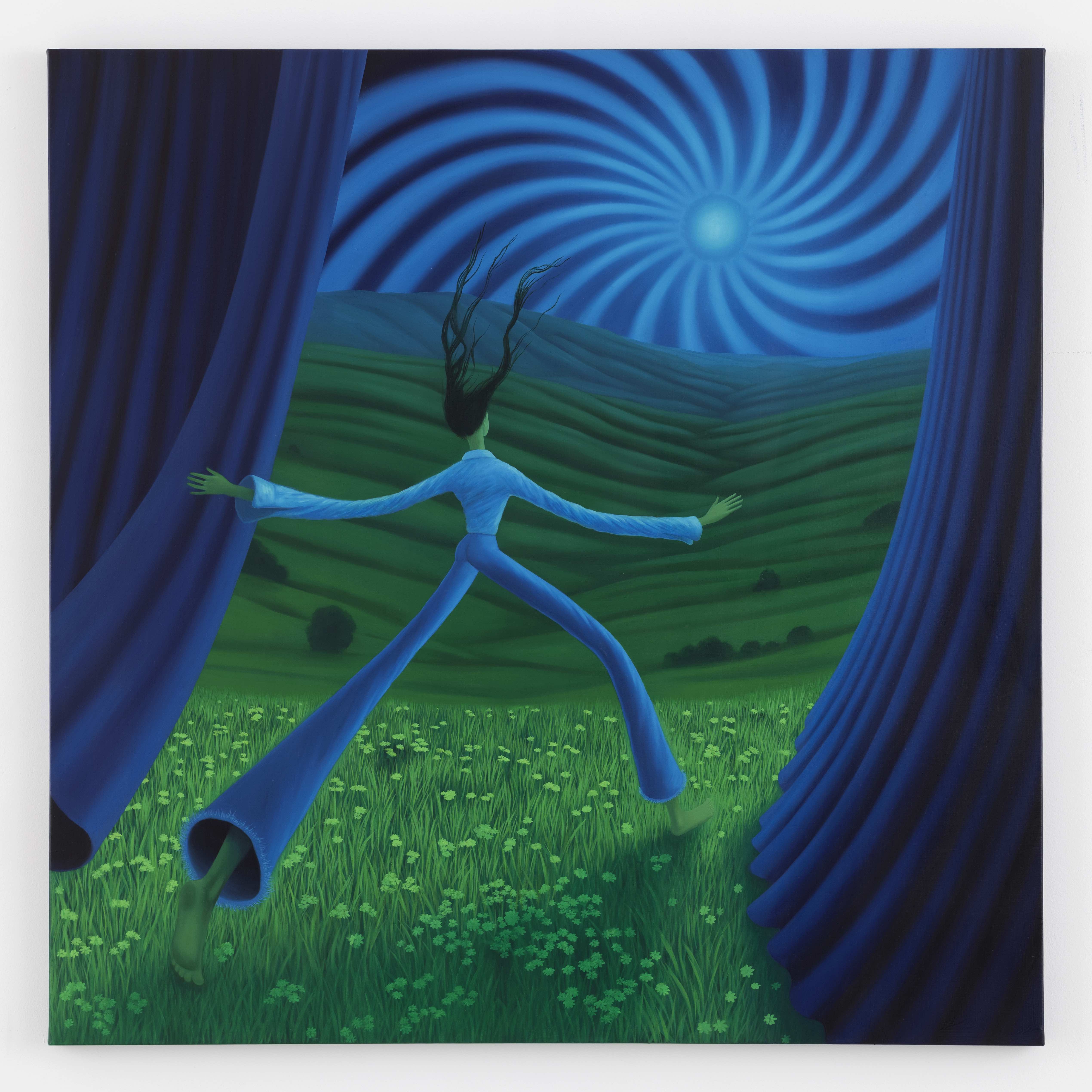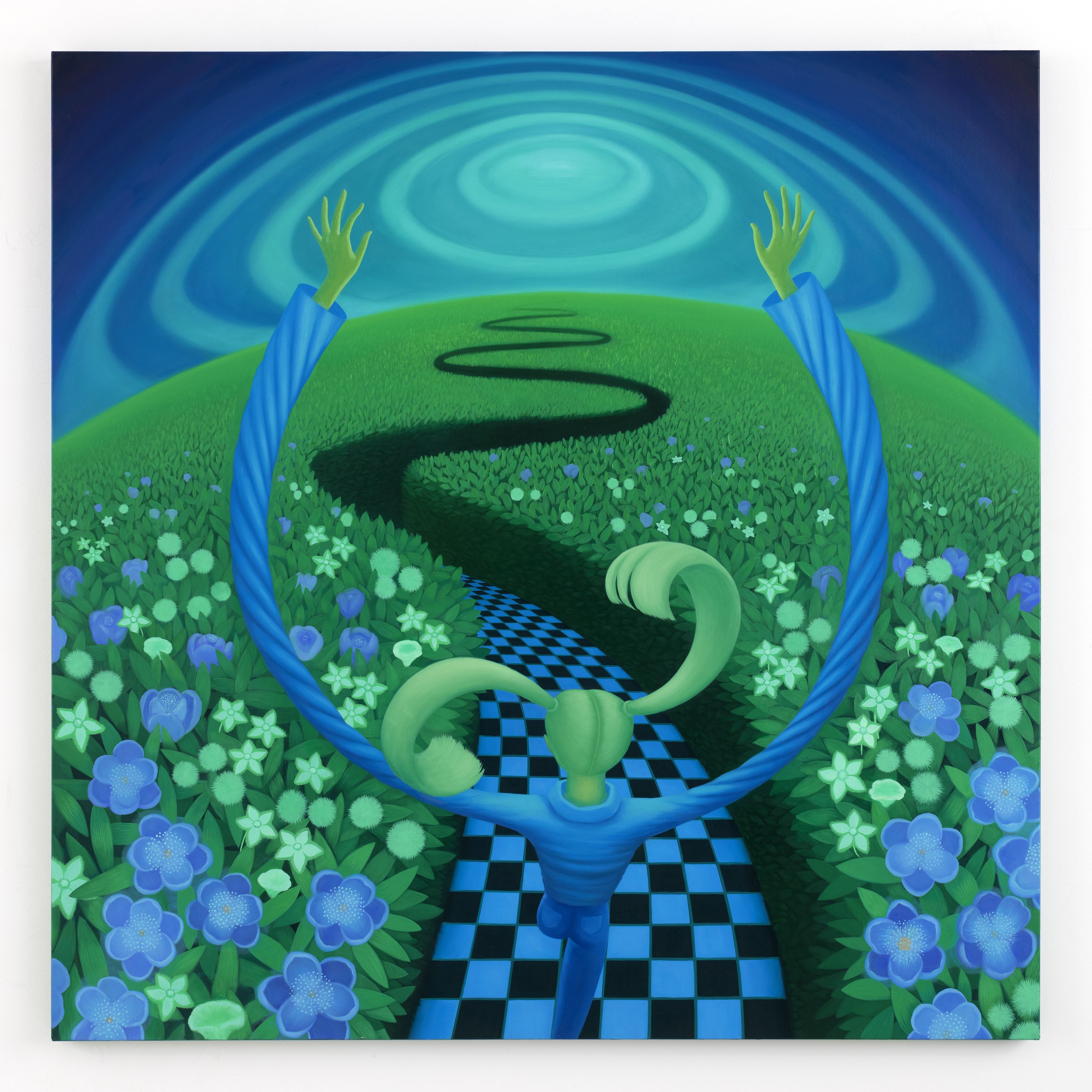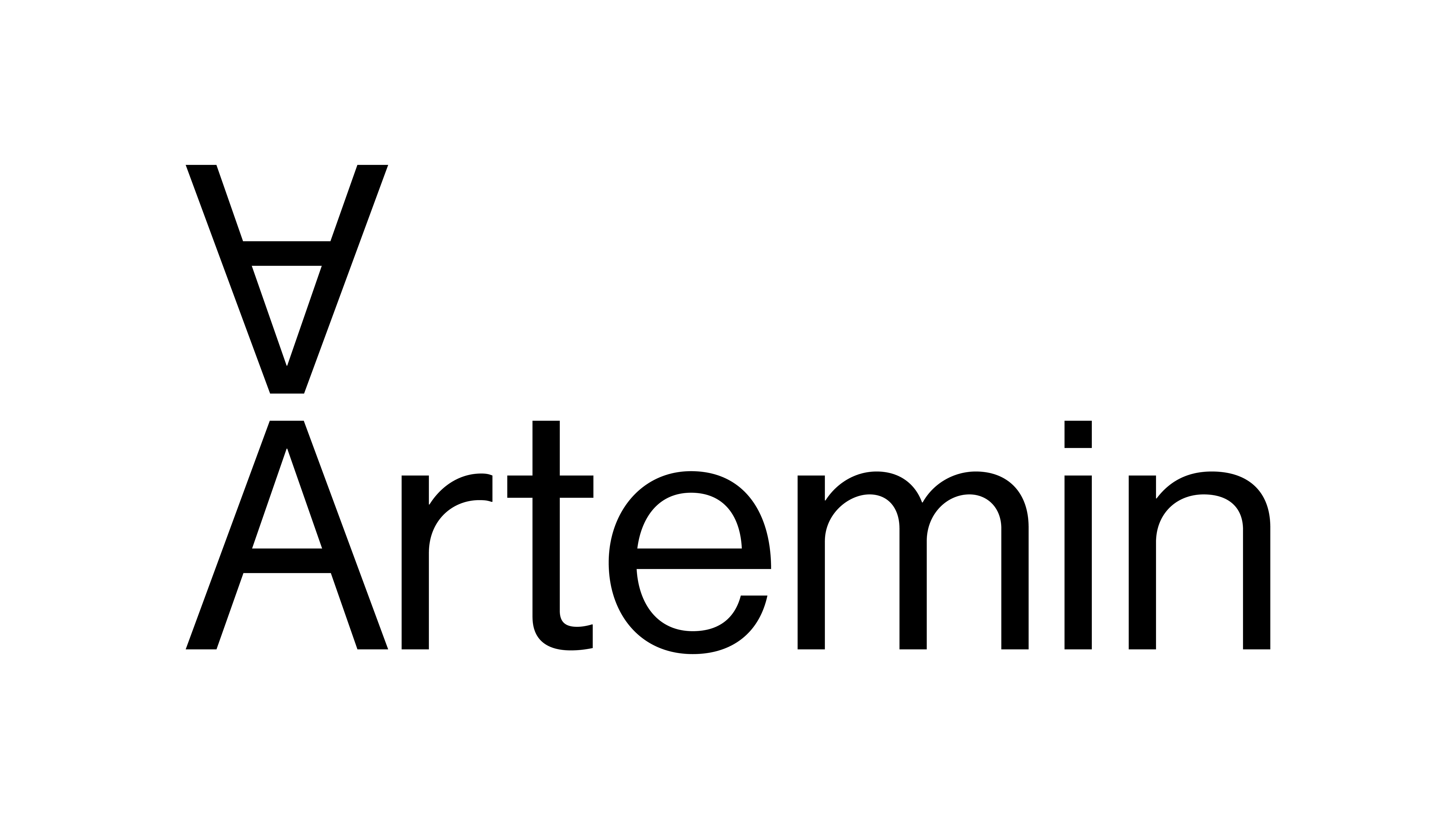INTERVIEW: Floral Dive
[ Exclusive Interview ] ARTIST: Katia Lifshin
1. How has your practice been affected by the recent war? Has anything changed your approach under the uncertainty? How do you cope with the situation?
Katia: Yes of course, i have changed, my so my practice has changed as well. I feel that since 7.10.23 I have become a more anxious person, which is of course directly a result of the environment I live in. Living in a place where dramatic and frightening events constantly happen can be unbearable to cope with, but also can make you shut down to the outside, become isolated in a bubble. I try to not look at what’s happening outside my little world, because it’s hard to cope with, and is also hard to change. I feel I have no control.
What I do have control over is what I do and focus on, and in my work, I noticed I started to get even more into small details. I can’t say it’s a direct correlation of these events, but I do feel a sense of control mainly when I’m in my studio, and when I grow plants. I became even more involved with growing plants and I always want to learn new things about plants, seeking how to incorporate new ideas into my work.
2. From your recent work, the touch for your paintings tends to be much softer than the past ones. What has changed your approach?
Katia: I feel it was a mix of events from the past year or more that affected me mentally, which influenced me to seek softer places in my mind perhaps as a coping mechanism. As a result I also feel I became less afraid to experiment with color and atmosphere. This body of work is really a result of this mind shift and feels like a new direction, one of many, which I want to explore more in the future. In my work I tend to create many “paths” and explore them. This solo show revolves around the symbolism of flowers, and the spiral.
I’m fascinated by the link between spirals, circles, these are the shapes that appear in the skies of my paintings, where halos and spirals repeat – and how these shapes echo the opening of a flower, its center surrounded by petals. These forms connect to the psychological idea of a “center,” of feeling centered.
This series is about finding a peaceful place within the mind, a personal inner center, and these works search this place almost like a mantra or hypnosis- The abundance of recurring patterns and countless flowers invites the mind to settle there, to escape into a calm, meditative space. It’s a feeling of diving into the world of flowers, plants, and nature, a mysterious realm that calms and soothes.
These works hold that duality: expansion while staying still – like a spiral, or a flower in bloom. They suggest the quiet of lying in a field of flowers and sensing how small we are in an infinite universe. Nature’s repetition mirrors the human experience: the endless paths, the circling back. Rather than resisting that rhythm, these paintings are about embracing it and moving with this rhythm.
Recent experiences pushed me to seek softer places in my mind, making me more open to color and atmosphere. This series centers on flowers and the spiral, symbols of infinity and growth within stillness.
3. How would you describe your gradual transition from real-life memories to a psychedelic art practice, and how you established connections with viewers?
Katia: The transition was gradual and organic. As my practice developed, I felt more free to use solely my imagination, this was a result of some psychedelic experiences I had and also because my technique improved, and I feel surrealism requires this to achieve a convincing surreal image.
The environment and characters slowly became more surreal, and certain symbols and narratives reoccurring again and again in my work because I constantly explore these places in my mind, and build from the feeling to the image, and not the opposite. The natural world and the characters in my work tell one story, they are intertwined with one another. They tell the story of psychological journeys of our human minds, the many questions, the many layers and emotions, the secrets and darkness, and the lightness and awe a human can experience. Connecting my work to surrealism and the natural world feels integral to express these feelings I want to explore.

4. The bodily gestures in your work, whether floating, interweaving, or softly tilting, appear to represent emotional states. Do you think that body language communicates the inner self more effectively than facial expressions?
Katia: The body is a tool to express feelings, thoughts and states of the soul. In my work the physical body and the soul are bound together, supporting one another in terms of story telling and narrative. The state of the body depends on the state of the mind/soul.
When I was little I used to do rhythmic gymnastics so I think I’m naturally drawn to exploring elasticity and flexibility in my works- the flexibility of the body, the power of the gestures within hands and feet, is something that is reoccurring in my work. The characters often twist in a non human way, extending themselves to express emotional states. It’s part of me and my inner world, that I put on the canvas.
5. During Covid time, you surprisingly introduced ‘yellow’ to be part of your work, and you mentioned that you will never use red in your work. Could you please specify how you make colour decisions and what the reasons are for both of them?
Katia: It might be that in uncertain times I’m just more inclined to explore colorful and brighter pallets. I am drawn to certain colors, and other I find not very welcoming to me.
6. Circled back with your recent interview, you and your grandmother share a really close bond. Do you think your characters from your work embodied her personality and active lifestyle?
Katia: It’s an interesting observation, and I think it is true to some extent, not in a direct way, but in a more intuitive manner, because these ideas are ingrained in me, are part of me. The idea of physical flexibility or simply physical strength to express mental states. The physical properties of the characters I paint do share many similarities with the image I have of my grandmother. I always felt that her inner child is present in her life and she is forever young, always jumpy and active. She is one of those people who always remain with a spring in their step.
But at the same time, these characters have more in them than that, other ideas and other parts that come from only my personal experiences. Even a darker side, twisting and “melting”, or jumping and extending, their flexibility can go both ways, positive or negative. And these ideas of light and darkness within the soul is something that reoccurs in my work, it’s a constant dialogue.

7. Your work often oscillates between reality and the surreal. Could you share one of the most striking dreams that has inspired your practice the most? How do you translate that dream into your artwork?
Katia: I have many strange dreams, and I remember them vividly. Some of them I translated to painting, some I will in the future.
I have many dreams about “entryways”, all kinds of them. Hallways, small corridors, with shelves and drawers, secret spaces, locked rooms I need to escape, small windows, tiny vents I crawl into. They all share the feeling of entering something or escaping something.
I sketched some of these dreams but one stands out to me: its one of my works titled “Hallway” (it was in my solo show last year in Vienna)
For this solo show- I took inspiration from a dream I had 3 years ago, about jumping into a big mountain of yellow flowers. The flowers were located under a big tree, on a mountain. And they kept falling from the tree, small yellow flowers, and I set inside with my head striking out and looked at the landscape in the distance: mountains, clear sky. This feeling is present in the paintings “Floral immersion” and “Spinner” in my show with Artemin.
I realized I tried to recreate this dream only after I finished these works- it wasn’t a conscious thing.
So my inspiration from dreams can go many ways, directly sketching what I saw, or trying to create a feeling. Sometimes the ideas can wait for years before you act on them, before you’re ready to commit to them. It’s an interesting thing.
8. In the final stage of creation, how do you determine that a painting is “finished”? Is it a visual intuition, an emotional saturation, or a rational decision?
Katia: I’d say it’s a rational decision, after a certain point in working on the painting I know precisely what I need to do to finish it. I’m working from a more lose approach in the beginning of the work process and slowly tightening it as I go along, in the beginning I often make changes to the paintings, I add details, new ideas, and slowly I tighten it to the point I have everything in place and in my head, and to finish it I’m left with only technical work.
9. We may discover the character’s garments sometimes as flat as a sheet, albeit they are twisted hard in certain work. Your work regularly features distorted trunks and necks, checkerboards and spiral patterns, together with green and blue bioluminescent themes; how did you come up with this idea? Does that reflect your struggles, especially when they come to be twisted?
Katia: When I introduce something into my work, like the twisted garments, I tend to explore the idea for a long time, create new meanings with it. like the twisted garments- they came to be from a feeling of exhaustion, like feeling twisted, but they took new forms of meaning- mental flexibility in a way- they allow my characters to reach,do, act, in non unman ways, extending their physical abilities. On the other hand- they also symbolize a body that is not structured, so when I explore feelings of deep sadness or hardship, these twisted limbs and bodies show that feeling. This symbolism allows me to “use” the physical body as a vessel for the mental and soul journeys.
The spiral is also reoccurring in my work, so the twisting features come from me being drawn to these symbols and shapes, the spiral, the squares, the repetition, all create a visual language I use to express the emotions I want to explore within my work.

10. Your characters often carry ambiguous emotional states. Do you intentionally leave this open, or is it a reflection of your observations on human complexity?
Katia: It’s intentional because my works are about the inner world, the human mind is so flexible, sadness and tranquillity can exist together. your mind can be a prison or a sanctuary. And I believe many of my works are exactly about this subject.
11. Any subjects that you wanted to challenge next? Could you talk about your future plans?
Katia: I would really love to make larger works for the near future, and give each one more time. Thinking of the work and being with it is not less important than painting it, and I would like to experience this more. I believe it will elevate my practice.






